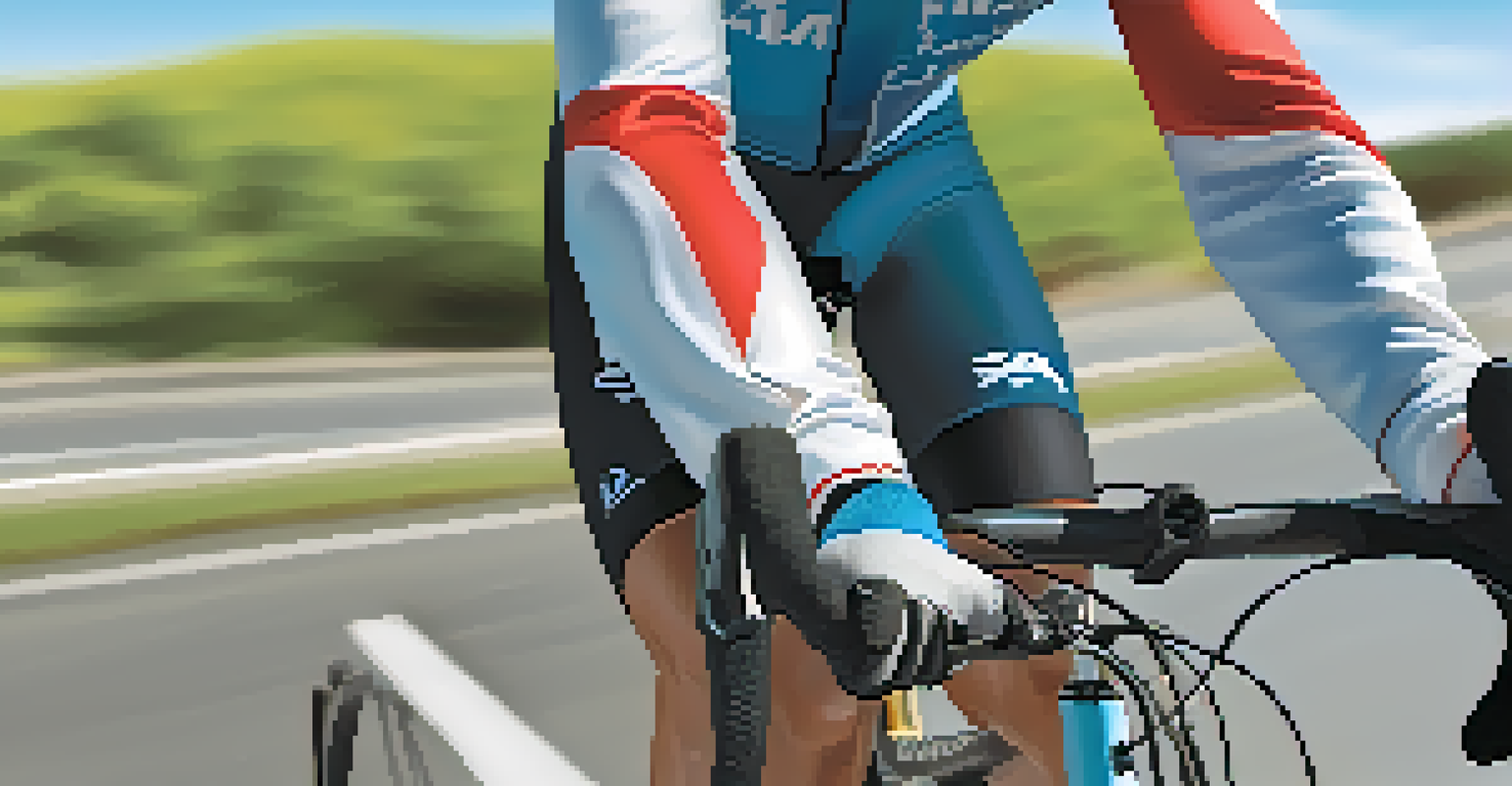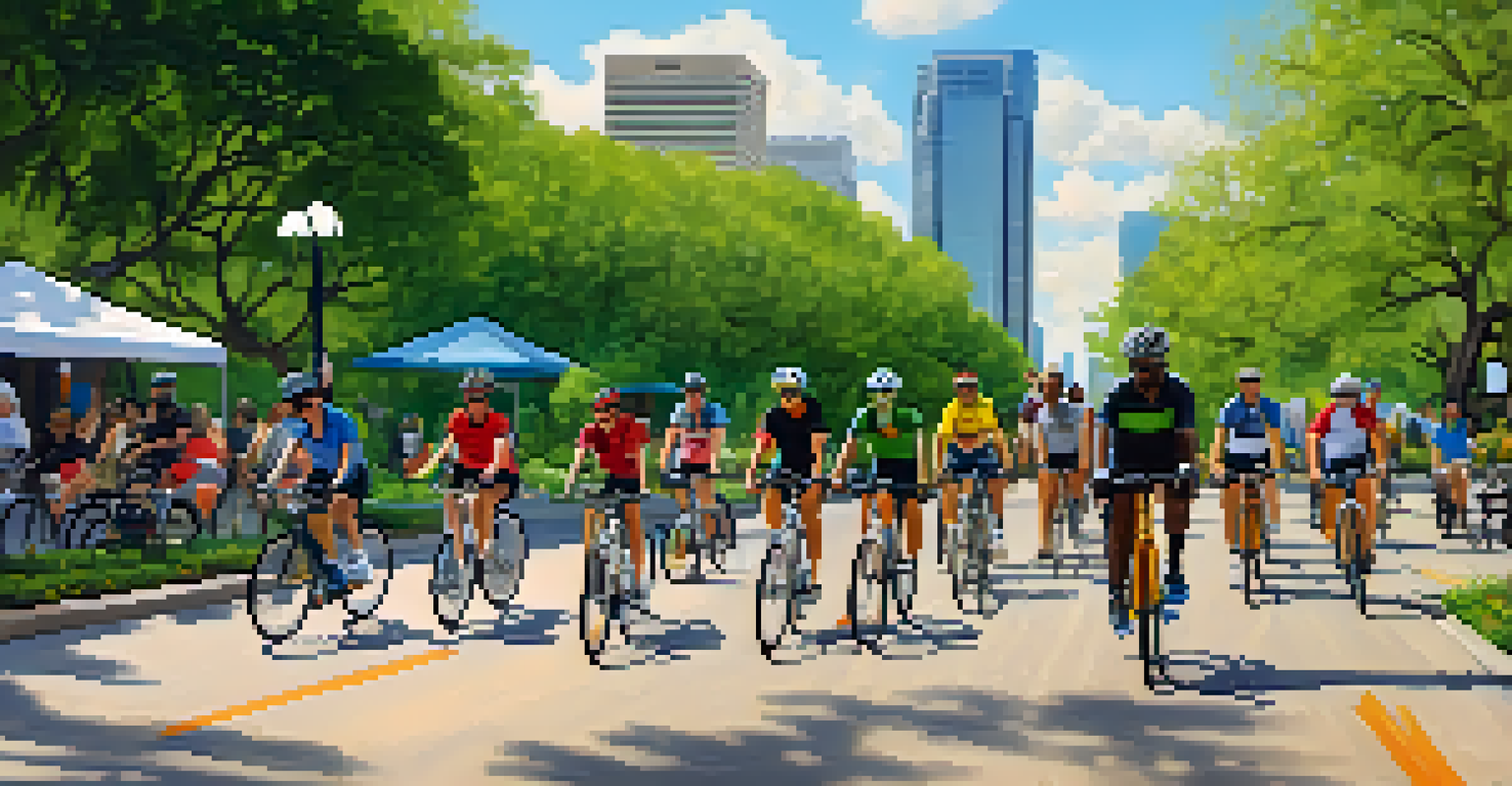Cycling Safety in Austin: Tips for New Riders and Veterans

Understanding Austin's Cycling Landscape
Austin is a vibrant city known for its thriving cycling community, with numerous bike lanes and trails. However, navigating the roads can be challenging for both new and veteran riders. Familiarizing yourself with the local cycling routes and traffic regulations is key to enjoying a safe ride.
Bicycling is a big part of the future of every major city in the world.
The city offers various resources, including maps and apps, to help cyclists find the safest paths. For instance, the 'Austin B-cycle' program provides easy access to bikes and information on bike-friendly routes. Knowing where to ride can significantly reduce the risk of accidents.
Additionally, understanding the behavior of drivers in Austin is crucial. Many local drivers are becoming more accustomed to sharing the road with cyclists, but it's still important to remain vigilant and predictable in your movements.
Wear the Right Gear for Safety
Investing in the right cycling gear is essential for safety. A properly fitted helmet is non-negotiable; it can significantly reduce the risk of head injuries in an accident. Look for a helmet that meets safety standards and fits snugly on your head.

Aside from helmets, consider wearing bright or reflective clothing, especially during dusk or nighttime rides. This increases your visibility to drivers and other cyclists, making you more noticeable on the road. Accessories like lights and reflectors can also enhance your safety.
Know Your Cycling Routes
Familiarizing yourself with local cycling routes and resources like apps can significantly enhance your safety and enjoyment while riding in Austin.
Don’t forget about your bike's safety features! Regularly check your brakes, tires, and lights, ensuring everything is in good working order before hitting the road. A well-maintained bike contributes to a smoother and safer ride.
Mastering Hand Signals and Communication
Effective communication is vital when cycling in traffic. Mastering hand signals not only keeps you safe but also informs drivers and other cyclists of your intentions. For instance, extending your left arm horizontally indicates a left turn, while a right turn can be signaled by raising your right arm.
To be a good cyclist, you need to be a good driver, a good pedestrian, and a good rider all at once.
Using these signals consistently fosters a safer environment for everyone on the road. It’s a simple yet powerful way to make your intentions clear and promote mutual respect among road users. Plus, it’s a practice that can become second nature with time.
Remember, eye contact with drivers can also be beneficial. A nod or wave can help establish that you see each other, reducing the chances of misunderstandings. Building this rapport can be a game-changer in busy traffic.
Stay Alert and Aware of Your Surroundings
Being aware of your surroundings is crucial for cycling safety. Avoid distractions, such as using your phone or listening to loud music while riding. Instead, stay focused on the road and the drivers around you, which will help you react swiftly to any potential hazards.
Look out for potholes, debris, or other obstacles that could cause you to lose control. Regularly scanning the road and using your peripheral vision can keep you one step ahead of any surprises. Remember, a proactive approach is far better than a reactive one.
Wear Safety Gear
Investing in proper cycling gear, including a fitted helmet and reflective clothing, is essential to ensure your safety on the road.
Furthermore, be mindful of pedestrians and other cyclists. Always yield the right of way when necessary, and be prepared to stop if the situation demands it. This awareness not only keeps you safe but also creates a more harmonious atmosphere on the road.
Know the Rules of the Road
Every cyclist should familiarize themselves with local traffic laws. In Austin, cyclists must follow the same rules as motor vehicles, including obeying traffic signals and signs. Understanding these regulations can prevent misunderstandings and promote safer rides.
Moreover, knowing your rights as a cyclist can be empowering. For example, in many areas, you have the right to use the full lane when necessary, particularly when there’s no bike lane. This knowledge can help you navigate challenging situations with confidence.
It’s also essential to stay updated on any changes to cycling laws or local ordinances. Engaging with local cycling advocacy groups can provide valuable insights and keep you informed about the cycling landscape in Austin.
Plan Your Routes Wisely
Planning your routes can significantly enhance your cycling experience. Utilize apps like Google Maps or specific cycling apps that can help you find the safest and most efficient paths. These tools often highlight bike lanes, trails, and low-traffic areas, making your ride smoother.
Consider incorporating scenic routes that allow you to enjoy Austin's beautiful parks and waterways. These routes not only provide a more pleasant experience but also tend to be safer than busy streets. Plus, exploring different paths can make your rides more enjoyable.
Join a Cycling Community
Being part of a cycling community provides support, shared knowledge, and enhances your overall riding experience while promoting safety.
Lastly, be flexible with your plans. Weather conditions, road closures, or construction can alter your intended route. Staying adaptable and having backup routes can help you navigate unforeseen challenges without compromising your safety.
Join a Cycling Community for Support
Joining a cycling community can greatly enhance your cycling journey. Groups often organize rides, share safety tips, and provide a sense of camaraderie among cyclists. This support network is especially helpful for new riders who may feel apprehensive about venturing out alone.
Local organizations like the Austin Cycling Association offer resources and events that promote safe cycling practices. Participating in group rides can also help you learn from experienced riders and improve your skills. Plus, it’s a fantastic way to meet like-minded individuals.

Don’t underestimate the power of community when it comes to safety. Having a buddy system, where you ride with friends, can provide an extra layer of protection. Together, you can watch out for each other and make your rides more fun and secure.
Embrace Continuous Learning and Improvement
Cycling, like any skill, requires continuous learning and improvement. Take the time to educate yourself about advanced cycling techniques, safety courses, or even bike maintenance workshops. These opportunities can boost your confidence and enhance your riding experience.
Consider attending clinics or workshops offered by local cycling organizations. Many of these sessions cover essential skills such as proper braking, cornering, and navigating traffic safely. They can be a fun way to meet fellow cyclists while honing your abilities.
Lastly, always be open to feedback and self-assessment. Reflecting on your rides and identifying areas for improvement can lead to better safety practices. Remember, the more you learn, the better equipped you’ll be to handle any challenges that come your way.